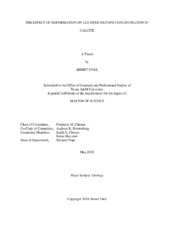| dc.description.abstract | The use of clumped isotope analysis in calcite is a rapidly developing and powerful technique for paleothermometry studies in tectonics and environmental sciences. For analysis of isotopes in deformed rocks, there is uncertainty if the deformation of the calcite can reset clumped isotope concentrations, which limits the utility of the method. The goal of this research is to help determine if some typical deformation processes, specifically plastic deformation of calcite at low temperatures (˂200 C), can affect clumped isotope concentrations. Seven cores of calcite are deformed experimentally at strain rates 2-4.2x10⁻⁵ s⁻¹ , temperatures from 20 – 400 C, at confining pressure of 150-200 MPa, and to strains of 10-25%. The cores are taken from parent crystals in four different orientations relative to the crystallographic directions of calcite in order to induce different types of deformation. The deformed samples were studied using optical microscopy and electron backscatter diffraction microscopy techniques to identify the types of plastic deformation that operated in each test. Both mechanical e-twinning and r- and r+ slip were successfully activated, and to varying degrees, in the sample suite. Yield strengths observed in the experiments agree well with that expected (based on previous work) for the twin and slip mechanisms identified through microscopy. On the basis of the outcomes of this research, clumped isotope measurements of the parent crystals and the deformed samples will determine if, and which deformation processes affect isotope concentrations. If isotope concentrations remain unchanged by deformation, then the reliability of clumped isotope analysis in deformed rocks will be assured. If deformation resets clumped isotope concentrations, then with further research the method holds great promise to determine the temperature at the time of deformation, which would be a unique capability. | en |


